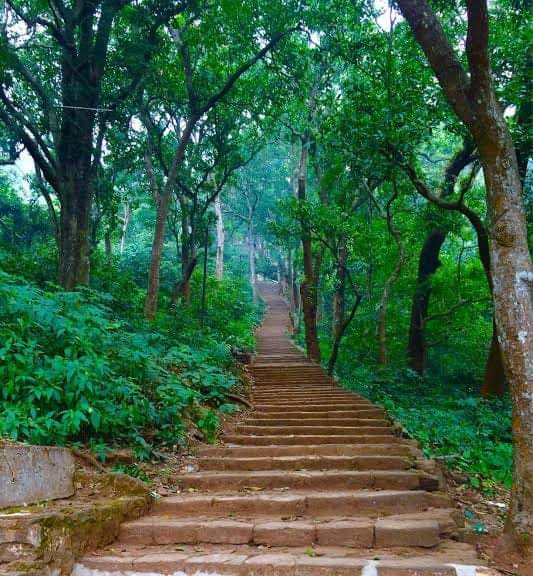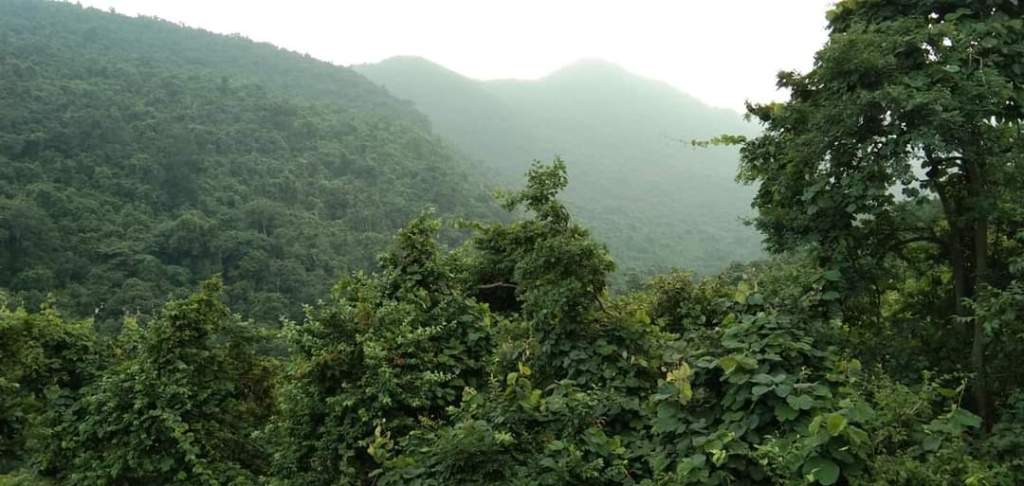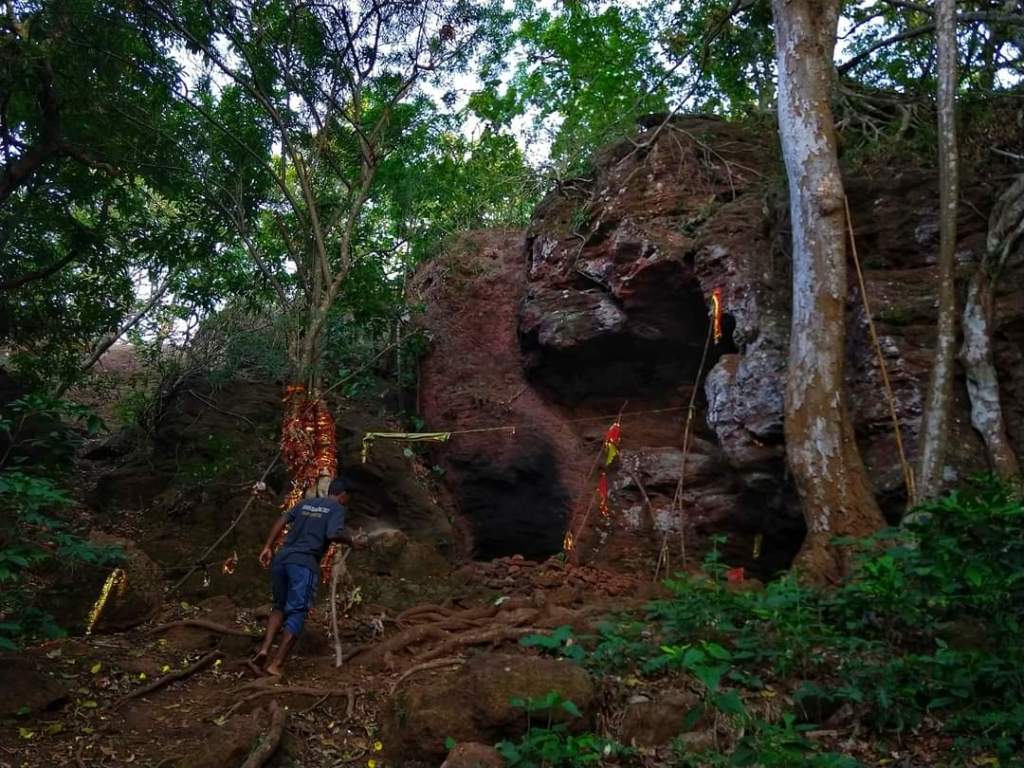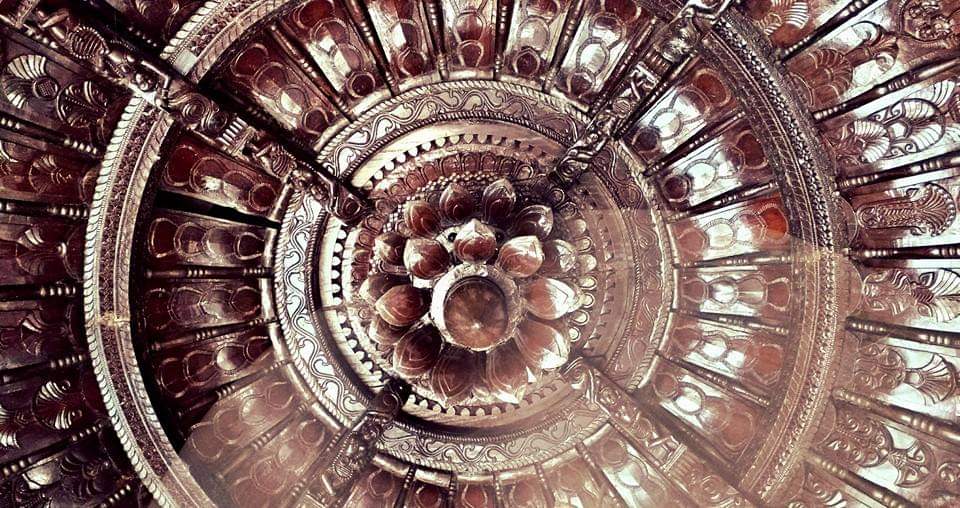“Don’t worry it will throw it away. We can grab it thereafter.” That was me consoling my friend.
I was on a trip to Kapilash temple with some friends. After completing a small trek, we had purchased a softdrink bottle to quench our thirst. This bottle was swiftly snatched away by an unsuspecting monkey. It was still sealed.
“How do you know?” My friend came back visibily distraught from the heist the monkey had pulled off.
“It’s a monkey! How would it know how to unseal a bottle?” that’s me throwing in all kinds of logic.
“It’s still half human” my friend told, his eyes still transfixed on that monkey.
“Wanna bet?” That was me, placing my chips agaist the success of the monkey.
“You are on. 10 bucks”, my friend declared and we shook hands affirming our bet of Rs.10. We are miser people, we don’t bet any substantial amount.
Stay tuned till the end of the post to know who won.
Table of contents::
1. Kapilash.
2. How to reach Kapilash.
3. Other places of interest around Kapilash.
4. Reaching the Temple.
5. The mountain road Bara-Banki.
6. Fooding facilities at Kapilash.
7. Sri Chandrasekhar Temple.
8. Mythological Origins.
10. Trekking beyond the main temple.
11. Reaching the summit of Kapilash Hill.
12. Encounter with a monkey thief.
13. The ride amidst the sunset.
Kapilash:
Odisha is an abode of hidden gems, and one such gem is Kapilash Temple, a 12th century Shiva temple at 2239 ft above sea level. This hill, which is part of the eastern ghats provides for some breath taking vistas of the surrounding hills and plains throughout ones journey to the temple. Being part of the Kapilash forest range the area is filled with greenery all round the year, which makes the climb up the temple even more pretty. This shrine also has some fascinating mythological links to Ramayana.
Kapilash sees a steady crowd almost all round the year owing to its popularity among the people of the state. The crowd however peaks on special occasions like Shiva Ratri and Kartik Purnima. The hills are also a popular picnic spot, so a lot of picnic parties transcend to the place during the picnic season in the winters. This gem of a place is however obscure when it comes to people from outside the states as the tourism potential of Kapilash isn’t fully explored. The Kapilash Temple Images I have as part of this post tries to bring to light the beauty of this place to the forefront.
How to Reach Kapilash:
The nearest town to Kapilash is Dhenkanal, which is well connected to the rest of Odisha by train, bus and rental cab services. It is also connected directly to some other states by train and bus as well.
Kapilash Temple Distance from bigger cities of the state like Cuttack or Bhubaneswar is 61 and 82 KM respectively making it a perfect weekend getaway for people of these cities as well.
There are plenty of hotels and guest houses in Dhenkanal where one can stay and explore some nearby attractions as well.
Kapilash Temple Timings:
The temple remains open from 5 AM to 6 PM everyday.
Other places of interest around Kapilash:
There is a deer park and zoo on the base of the Kapilash hill, which sometimes is refered as Kapilash Temple Santuary. It serves as an additional attraction for children who travel to the temple. A popular picnic spot called Saptasajya is also located nearby.
Reaching the Temple:
We had started from Bhubaneswar in the morning and reached Kapilash in the afternoon. As we reached the base of the Kapilash hill, we were welcomed by a massive concrete gate and statue of a bull, the vahan (ride) of lord shiva ‘Nandi‘. The road hence forth passes through the Kapilash forest range and ends up at the starting point of the uphill climb.

The temple which is located at 2239 ft can be reached either by climbing up 1465 steps or using a vehicle through a motorable road that meanders through the hill. One of my friend wanted to try out the stairs as it seemed fun to him. We reluctantly agreed and parked our bikes in the parking lot at the bottom of the hill and made our way towards the stairs. The first look of the endless stairs, reaching to the heavens, however broke our resolve and we decided not to undertake any such endeavors.

Since stairs were out of question, the road was the only option left to us. So we took our bikes out of the parking and started our ride up the hill.
The mountain road- Bara-Banki:
We were on our way to the Kapilash temple through the motorable road that traverses through 12 hairpin bends. The road is locally called Bara-Banki. 12 is Bara and bend is Banki in Odia, no body really thought of giving any complicated names in this part of the world.

The road had lush vegetation on both sides, the breathtaking greenery of trees, grass and moss was painting a picture incomprehensible in words. To top it off the winding road, which was in a very good shape, ensured a smooth sail.
The first few turns didn’t seem much of an issue, until we reached the 8th bend. This one was steep. Our bike was struggling to make that turn. We were fortunate that traffic was thin in those hours of the day and we could focus all our driving prowes in making that turn. The next few turns were again not much of an issue.
After struggling again a bit on the 11th bend, we reached the parking zone of the temple. There were some humble shops lined up there most of which sold stuff related to puja. Some usual stuff like, biscuits, chips, soft drinks and mineral water also found place among things that these shops sold. Walking up a few meters, we witnessed a view of the misty green hills that could easily make any nature lover drool.

Fooding facilities in Kapilash:
At the gates of the temple a small dining hall has been setup for pilgrims who would like to take their lunch here at the temple. They provide Abhada, which is a simple satvik food course, mainly comprising of Rice, Lentil, Vegetable Curry etc and the charges vary from Rs.60 to Rs.80 depending upon the variety of food you choose to take. Abhada is also available inside the temple, with lower cost and smaller menu spread.
We however had eaten on our way to Dhenkanal, so lunch was out of question. Typically people try to reach the temple in the morning and take their lunch here. Abhada is generally very tasty and fulfilling and hence quite popular in Odisha. Would definitely give it a shot in my next trip to the hills.

Sri Chandrasekhar Temple:
We dropped our shoes at the entry and went into the temple complex. The temple was glistening white in colour, with some basic embellishments of statues on it’s walls. The main tower of the temple is 60 feet tall, built in the distinctive Kalinga architecture style.

Kapilash temple is a de-facto name, that has gained popularity over time. Kapilash in fact is just the name of the hill on which the temple is situated. The actual name of the temple is Chandrasekhar Temple, however in regular conversation no one really refers it by its original name.
Kapilash Temple History is very simple. It was built by King Narasinghdeva I of Ganga Dynasty in 1246 CE. The main deity of the temple is a Swayambhu (naturally occurring) Shiva Linga, which resides in the inner sanctum.
The exterior of the temple had a statue of lord Jagannath, who is said to be the parsa deva of the temple. The interior of the temple had stone pillars supporting the main construction, which were mostly simple, barring some small carvings on the top half of it.
The ceiling however was covered with intricate wood work, something not commonly found in temples in Odisha. It’s heartwarming to see how the wooden interiors have managed to stay intact even after all these years.

Behind the temple, a few meters above lay a few more temples sprinkled in the hills. One major temple among them is the Vishwanath Temple, which is also known as Budha Linga. This temple is much older than the Chandrasekhar temple, hence the name Budha (which means elder in odia) has been attributed to it.

Mythological origins:
In the epic Ramayana, when Sita left Ayodhya, she took refuge in the ashram of a sage called Kapil. She gave birth to her sons Luv and Kush while staying in the Ashram itself. It is believed that the mythological ashram was situated in this hill. That is the reason why the hill is called Kapilash, referring to the name of the sage Kapil.
There is a cave here which is believed to be the place where Sita went into labour and gave birth to her sons Luv and Kush. This labour room of Sita, serves as an additional attraction to the hills.

Treking beyond the main temple:
Most people who visit Kapilash, are more than satisfied with the darshan of lord Chandrasekhar and leave soon after. But since we were all wanderers, we thought of going till Devasabha, which is situated on the top of the hill. Yes, there is still places beyond the Chandrasekhar temple in the Kapilash hill.
This was looking like another endless string of stairs, that lead further into the hill. As per the signage the path was leading towards the ‘sitankara enduisala’ which means Sita’s Labour Room and then to Devasabha (conference of gods).
We started trekking towards those places. The climb which started with a few properly paved steps gradually gave way to loose stone steps, which seemed centuries old. The stone steps then lead to a muddy trail that made it’s way through thick foliage and monkeys. There is no respite from monkeys irrespective of how high or low you are on the hill. They are everywhere!

Two of my friends bailed out, not able to take the hike anymore. The hike was not treacherous but the fact that we were doing it barefoot was making it an ordeal. (We had dropped our footwears in the entrance, remember!)

Finally after climbing a few 100 meters we reached a small cave that was adorned with red holly cloth, bells and earthen lamps. This is the famed labour room of Sita, where as per the myth she gave birth to Luv and Kush.

Reaching the summit of Kapilash:
A narrow trail ahead lead towards the top of the hill, to the last attraction called Devasabha. It was a question in our minds whether to climb any further or not, but considering we had already come this far, not going further didn’t make sense. So despite the pain we pressed on.
The base of our foot had gone completely numb by now, small stones and twigs were not registering any more. ‘Just a few more’, we kept repeating trying desperately to keep our spirits high, which by now was on the brink was falling apart. We just wanted to reach the top of the hill.

Ten excruciating minutes later we reached a flat open area which had statues of various gods all around. Finally, we seem to have reached the summit of Kapilash Hill, we have set foot in the Devasabha.

As per myth, this is the place where gods sat on meetings to decide on various issues arising on earth. For us though it was the feeling of completing the trek barefoot, that was heavenly. We felt like we had achieved something. The view from the top made up for all the pain endured.

Encounter with a monkey thief:
We loved the view from the top and didn’t want to come down. Party because of the natural beauty, and partly because we didn’t want to again treck our way back. After deliberating a bit, we started our descent which took around 20 painful minutes. As soon as we reached the gates of the temple complex we rushed towards the shop that was selling soft drinks. When couch potatoes like us complete a small hike like this, we are bound to rejuvenate the lost calories.
We bought a couple of soft drink bottles, opened one and started sipping it. Another bottle was kept as reserve to be openened later. It was dangling between the fingers of one of my friend while he was busy talking about the trek we just had. Suddenly he noticed that the bottle had vanished from his hand.
A monkey had appeared from a nearby shrub, grabbed the bottle and ran off as lighting. The thing happened so fast that before we could realize what happened the monkey was a good 10-15 meters away.
This is when we placed our bets.
Did the monkey know how to open a sealed bottle? If not, it would get frustrated trying and throw it away. Since I have already established that we were misers, we could then salvage the drink. We were watching with clasped breath when the monkey did the unthinkable. It bit off the bottom of the bottle and drank the fizzy liquid. It didn’t even touch the seal.
I looked at my friend and told, “It didn’t open the seal. I win!”. That classic me, trying to find loopholes in the contract.
He didn’t seem much amused as we made our way towards our bikes. I wasn’t in a mood to pay, so convinced my simple friend to call it a draw. May be monkeys here still haven’t mastered the skill of bottle opening, but they definitely have found a workaround. Monkeys here seem a regular at it.

The ride amidst the sunset:
Our descent down the twisting roads was complemented by the wonderful sight of the sun, that was on its way out, bidding good bye to the Kapilash hills. I can only imagine the sight of a foggy morning and the rising sun in these hills.

We visited a centuries old temple, took a beautiful hill road to reach it, marveled at the intricate wood work, hiked barefoot on a muddy trail and lost a good amount of soft drink to a monkey. This was more than what we had expected from our trip. Kapilash is, so accurately an unseparable part of the must visit locations in Odisha. It is not just a place of pilgrimage but a place to immerse oneself in the unadulterated nature.









5 replies on “Devotion at 2239 ft – Kapilash Temple”
Wow, nicely articulated, I enjoyed every bit of the journey, temples and scenic beauty. Must say, beautifully captured photographs brightened the storyline to a great extent. The story of the monkey is very common though, I have witnessed the same in many other places in India. Great travel story indeed !!!
LikeLike
Good
LikeLike
Thanks, informative post for me.
LikeLike
Amazing stories.
LikeLike
One day I would want to visit there.
LikeLike